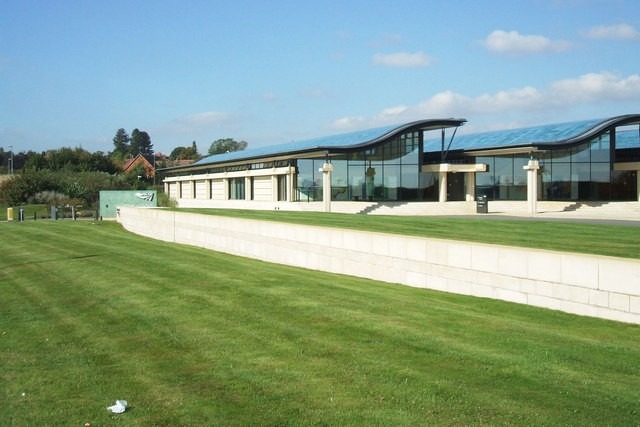
The Coventry Society supports the campaign by the Westwood Heath History Group to save the Network Rail Building, formerly the Cable & Wireless College, in Westwood Heath Road. The building is locally listed (listing reference: DCT1340), but is not on the National Heritage List. The following history of the building and its architects is written by Jill Kashi, the Chair of the history group.
Timeline
1992-1994: The building was constructed, commissioned by Cable & Wireless and designed by architects, MacCormac Jamieson Prichard (MJP). At the time, Richard MacCormac was President of the Royal Institute of British Architects, a position he held from 1991-3.
1994: named ‘best building in Britain’ by the Royal Fine Art Commission and considered to be ‘one of the best new buildings in Europe. This is not just because it is glorious to look at. With its waves of sea-green tiled roofs, elliptical entrance courtyard, Mogul-inspired garden and unexpected use of rich colour, it could hardly be anything else.’
The building has been judged as showing ‘a sensitive understanding of geometry and locus’. Sitting within a rural landscape, the structure was ‘given presence and sense of place despite its isolation by sophisticated handling of space and materials which include ceramic tiles, glass, concrete, stainless steel and copper’.
The building boasted:
- Twenty classrooms
- 22 technical training rooms
- An extensive library
- 168 bedrooms in nine houses
- A restaurant
- A leisure centre and pool
- Sports hall
- Squash courts
- Gym
- Sauna
- A Café bar
The structure comprised three blocks: a single storey teaching block to the South; a three-storey administrative and residential block to the North; and a sports and leisure block to the East. It was called a ‘modern monastery’ with its cloistered walks and pools.
2005: purchased by Network Rail to be used for training of personnel. Network Rail spent over £20 million on the centre to ‘deliver a programme of professional skills development, including accredited leadership and management courses, developed in conjunction with the University of Warwick’.
2012: refurbished by Costorphine & Wright, whose brief was ‘to consider ways to make the building more efficient and look for ways to increase the building’s capacity and therefore training throughput’. This led to ‘a transformation of the building into a buzzing, vibrant building that’s now Network Rail’s flagship conference facility’.
2022: due to decreasing use of the facilities, the building was ‘mothballed’. A Network Rail spokesman said ‘we are working towards finding a way forward’.
The Architects
East London-based firm, MacCormac Jamieson Prichard, was founded in 1972 by Richard MacCormac with Peter Jamieson and David Prichard. They designed traditional houses in the 1970s and 80s, before accepting commissions for higher education facilities, including some Oxford and Cambridge colleges. By the 1990s and early 2000s they designed public buildings, including the ‘flagship’ Cable & Wireless College and the BBC. They became known for their innovative approach and distinctive modernist style, undertaking many high-profile commissions in their 51 years of operation. They were known for their ‘capacity to surprise’ with their designs. It was said of their style, ‘throughout much of their work, MJP have developed a trademark elevational typology that features heavily articulated facades composed of multiple extruded layers and components’. Richard McCormac in particular considered architecture as an art as well as a ‘social service’. The company closed in December 2022, severely affected by the impact of the Covid-19 pandemic.
MJP’s association with Coventry continued in 1998 with the Phoenix Initiative, the city centre’s significant regeneration project. Here, works of seven artists and one poet are integrated within a series of new spaces. The concept is that of a journey being created through the city, emphasising Coventry’s position as a city of international reconciliation. It included the installation of public art, such as the Whittle Arch, signifying the route from the past (St Mary’s Priory and Cathedral) to the future (the Garden of International Friendship).
Richard McCormac’s obituary assesses the company’s most notable buildings to be:
The Sainsbury Building, Worcester College, Oxford, known for its ‘dreamlike effects’.
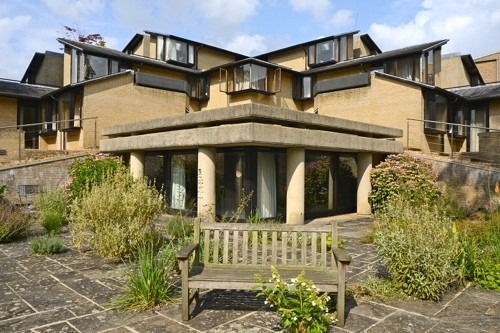
www.c20society.org.uk/100-buildings/1983-sainsbury-building-worcester-college
Fitzwilliam College Chapel, Cambridge, called ‘an ethereal space’.
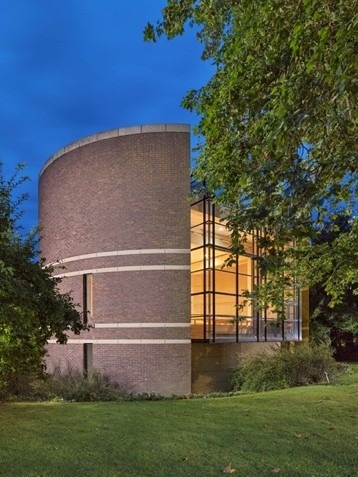
www.historicengland.org.uk/whats-new/in-your-area/east-of-england/fitzwilliam-college-cambridge-buildings-listed/
Ruskin Library, University of Lancaster, praised for its ‘evocative colours, light and texture’.
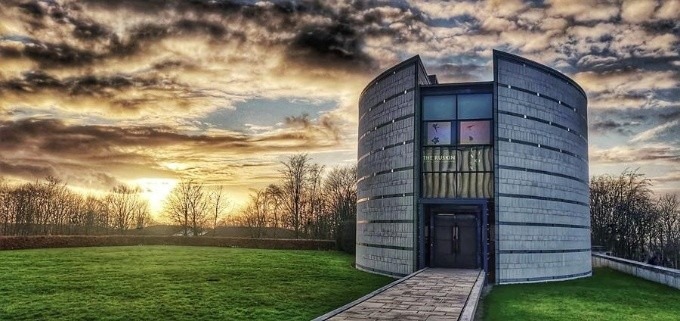
www.lancaster.ac.uk/the-ruskin/our-building
The training building of Cable & Wireless College outside Coventry, celebrated for its ‘undulating waves of the blue-tiled roof’.
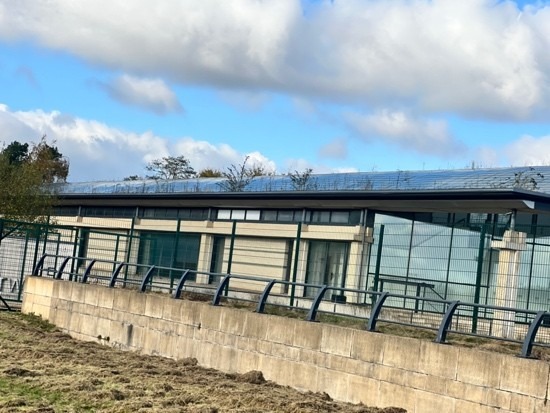
Jill Kashi, Westwood Heath History Group
November, 2024
